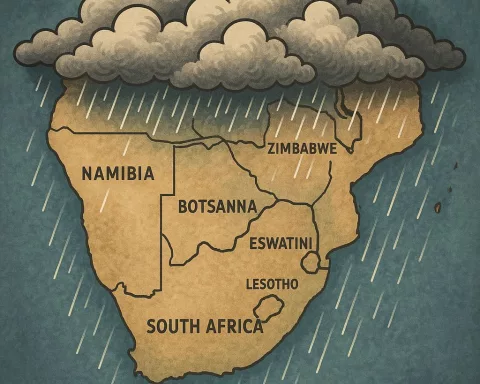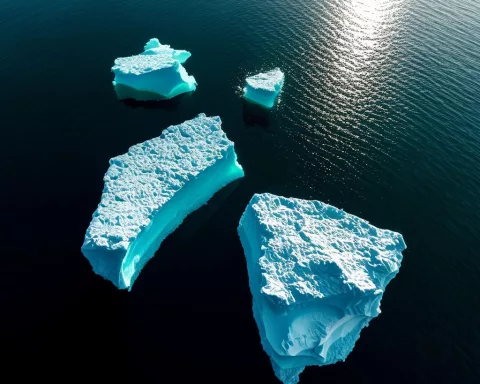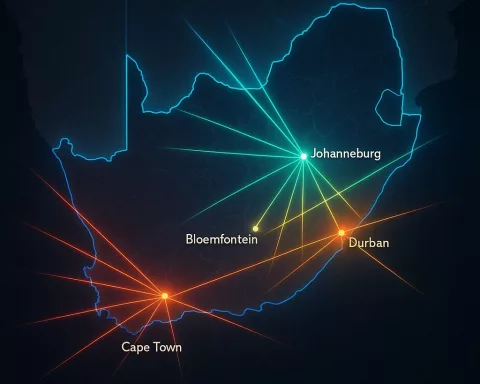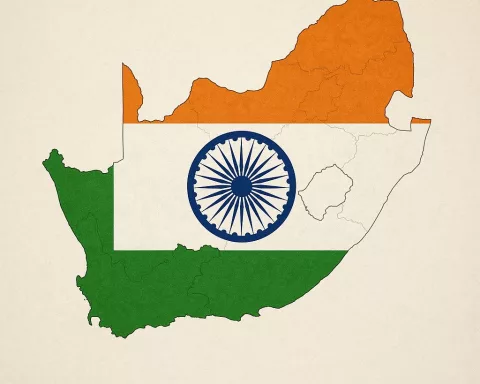Cape Town’s Bloubergstrand, a beloved tourist destination, is facing a grave threat due to rising sea levels from climate change. Studies project a loss of 112.1 meters of coastline by the end of the century, making it the ninth most at-risk tourist beach in Africa. This highlights the urgent need for immediate and collective action from global political and economic entities to address the worldwide crisis of rising sea levels and erosion. Saving these natural marvels is not just an environmental priority, but an economic necessity.
What is the impending threat to Cape Town’s Bloubergstrand?
The looming danger to Bloubergstrand is the result of rising sea levels due to climate change. Studies project a loss of about 112.1 meters of its coastline by the end of this century, making it the ninth most at-risk tourist beach in Africa. This is a distressing illustration of a worldwide crisis that calls for immediate and unified efforts from the globe’s influential political and economic entities.
The captivating beauty and serene ambiance of Bloubergstrand, a jewel of Cape Town, are undisputed. This favorite tourist destination, however, faces a significant peril. The looming danger is the direct result of climate change, more specifically, rising sea levels that might reduce Bloubergstrand’s allure drastically. Recent studies paint a dreary picture, projecting a loss of about 112.1 meters of its coastline by the end of this century.
A Glimpse into the Frightening Future
This ominous forecast, based on data from the European Commission and analyzed by HawaiianIslands.com, ranks Bloubergstrand as the ninth most at-risk tourist beach in Africa. This information provides a shocking disclosure of climate change’s potential rampage on our treasured coastlines. The risk extends beyond just the physical beauty of these sandy beaches, which make up over a third of the world’s coastline.
Beaches symbolize more than just picturesque landscapes; they are vibrant ecosystems teeming with life, providing natural habitats for diverse species such as birds, insects, shellfish, and turtles. They also serve a crucial role as natural fortresses, protecting the vital agricultural and infrastructural developments on land from the ocean’s unchecked force. Coastal beaches shield lives and livelihoods from the harsh aftermath of intensified storms and erosion, a heartbreaking fallout of climate disruption.
Bloubergstrand: A Symbol of a Global Crisis
The predicament facing Bloubergstrand serves as a distressing illustration of a worldwide crisis. This crisis calls for immediate and unified efforts from the globe’s influential political and economic entities. The daunting challenge of rising sea levels and erosion, however, is not limited to Bloubergstrand alone. The extensive study identifies other tourist beaches worldwide that are on the cusp of devastating losses.
Landmark Beach, located in Lagos, Nigeria, is expected to experience a dreadful loss of 918.3 meters of its coastline by 2100, outpacing all other tourist beaches across the globe. Conversely, Playa Akumal in Cancún, Mexico, is projected to lose 265.9 meters, rendering it the most endangered beach in North America.
Immediate Action: A Necessity, Not an Option
There is an urgent need to address this precarious situation immediately. While some changes in the shoreline are a part of natural processes, the hastened loss of sandy beaches calls for swift and effective solutions. Although coastal sedimentation and ‘landrise’ might offset the issue in some areas, it falls short of adequately compensating for the massive loss we are likely to face.
Every country that boasts of beaches must recognize the critical importance of conserving these natural marvels. They are more than just symbols of culture and history; they offer a crucial defense against rising sea levels and erosion. Tourist beaches, characterized by heavy foot traffic, warrant special consideration. These beaches significantly contribute to the local economy through tourism, making their conservation an economic necessity as well as an environmental priority.
A Ray of Hope Amid Despair
The situation might appear grim, but it is not beyond redemption. With committed and substantial action, we can prevent the disappearance of these sandy fortresses. Our beaches stand as a testament to nature’s enduring beauty, and safeguarding them must be a global priority. Ignoring this call to action is a luxury we cannot afford if we wish to protect our environment, economy, and shared future.
What is causing the threat to Cape Town’s Bloubergstrand?
The primary cause of the threat to Bloubergstrand is rising sea levels due to climate change.
How much of Cape Town’s Bloubergstrand’s coastline is projected to be lost by the end of the century?
According to recent studies, about 112.1 meters of the coastline of Bloubergstrand is projected to be lost by the end of this century.
Why is saving Bloubergstrand important?
Saving Bloubergstrand and other natural marvels around the world is not just an environmental priority but an economic necessity. These tourist destinations contribute significantly to the local economy through tourism and offer a crucial defense against rising sea levels and erosion.
Are other tourist beaches in the world facing similar threats?
Yes, the study identifies other tourist beaches worldwide that are on the cusp of devastating losses. For instance, Landmark Beach in Lagos, Nigeria, is expected to experience a dreadful loss of 918.3 meters of its coastline by 2100, outpacing all other tourist beaches across the globe.
What kind of action is needed to address this situation?
There is an urgent need for immediate and collective action from global political and economic entities to address the worldwide crisis of rising sea levels and erosion. Every country that boasts of beaches must recognize the critical importance of conserving these natural marvels.
Is there hope for saving these natural marvels?
Yes, with committed and substantial action, we can prevent the disappearance of these sandy fortresses. Our beaches stand as a testament to nature’s enduring beauty, and safeguarding them must be a global priority.












